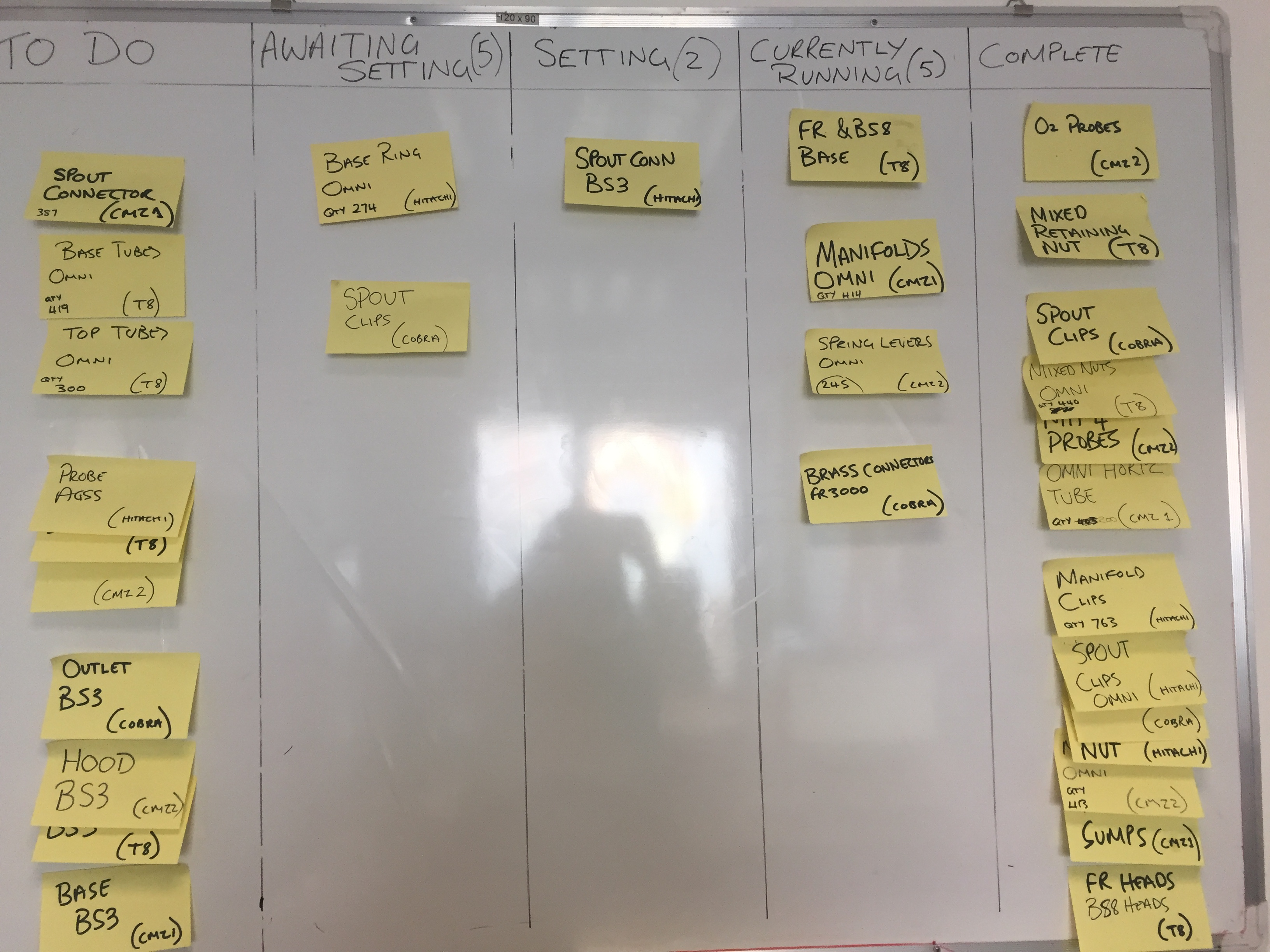
Using a Kanban board to help us get Lean
To manage our work load, we have been using scheduling software. Whilst it is a fantastic tool for showing us our capacity, we do find that it had its limitations. For one, it doesn’t allow for any external factors which might affect the run time of a job. No job is ever that cut and dry so it’s a case of constantly going back into the system and updating it. We also found, as many of us do, that technology can sometimes be unreliable. I wasted many hours trying to get through to the right person to regain access to my account after it had decided to reset itself over the New Year! So, in the interests of our Lean journey and keeping things as simple as possible, we decided that a Kanban board might be worth looking at as a way to help us manage our workflow.
What is a Kanban Board?

A Kanban board is a visual aid which plots the flow of your work from the point of order to completion. The easiest (and cheapest) way for this to be set up is a white board with post it notes for each job. For example, the Kanban board in the machine shop has a section called To Do, where all new orders are placed. Once the machine shop is ready to start having a look at the job, it moves over to Awaiting Setting . Once it’s being set up it moves over to Setting, then into the Running section once the job is underway. Finally it’s over to Complete once it’s all done. It is all very straightforward!
 We are running something similar for assembly but we have adapted it to meet this department’s particular needs. Anyone who looks at it can instantly see which jobs are ready to do. If they’re not, is shows why there is a hold up. The team can then speak directly to other departments in order to manage this effectively.
We are running something similar for assembly but we have adapted it to meet this department’s particular needs. Anyone who looks at it can instantly see which jobs are ready to do. If they’re not, is shows why there is a hold up. The team can then speak directly to other departments in order to manage this effectively.
How is it working for Stokes & Rowe?
We have found the Kanban board has been useful so far in keeping everyone organised and on target. We place the highest priority job at the top and team members don’t have to waste any time looking for management to find out what their next job is. It’s all right there in front of them on the board.
Everyone takes charge of managing the Kanban board, rather than one person constantly logging into the scheduling system and then updating the team with printouts! What a waste of time and paper! And as I mentioned before in a previous post, in order to create a totally Lean environment, it is vital that everyone is involved and taking responsibility.
Capacity planning is a necessary evil as it adds no value to our customers. We’ve discovered that we can keep scheduling via computer software to a minimum as long as our visual cues are in place and kanbans set up properly.
Happy Manufacturing!
Rob, Nicola and the Team